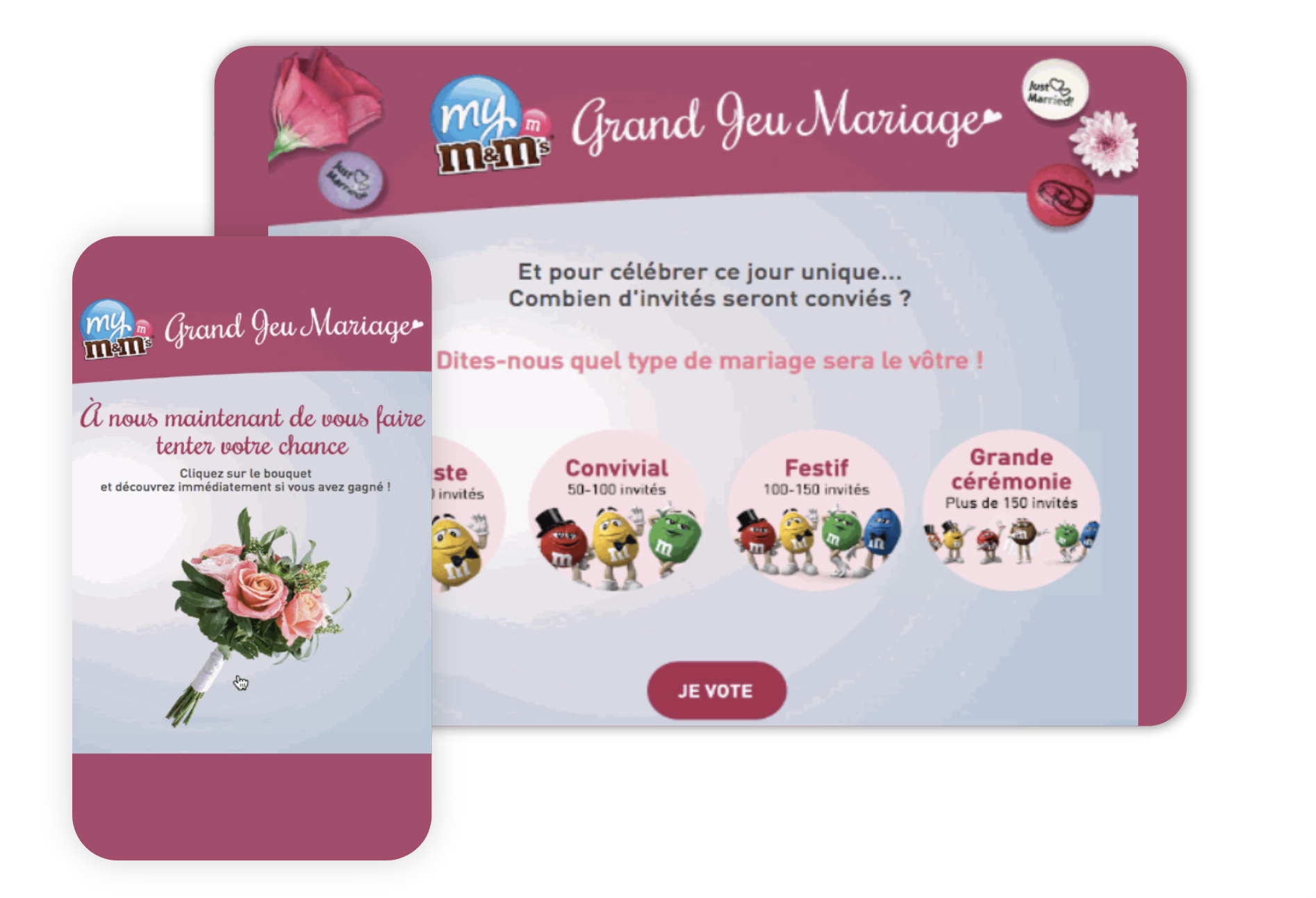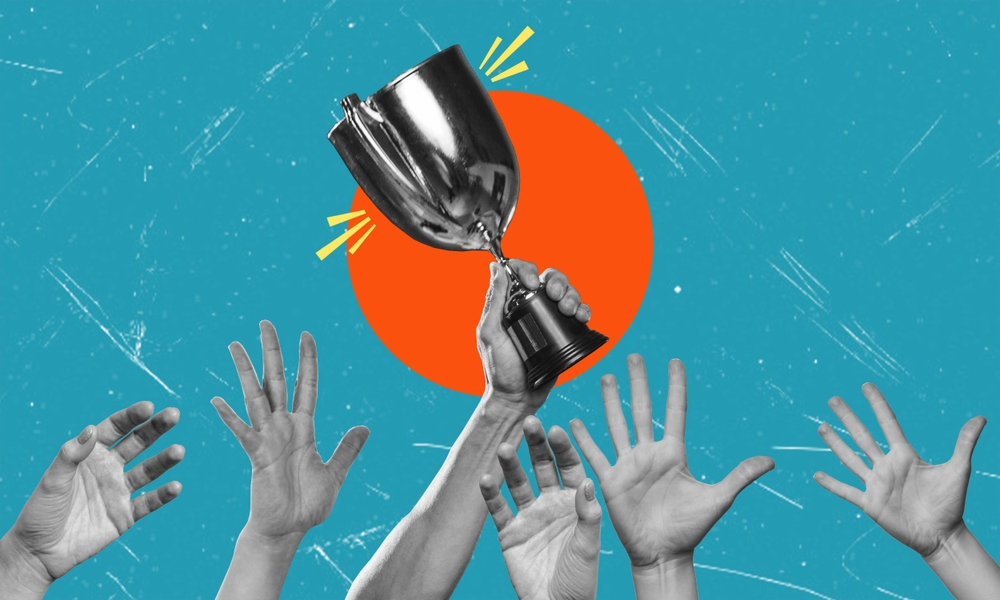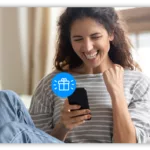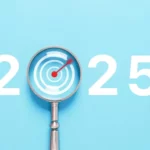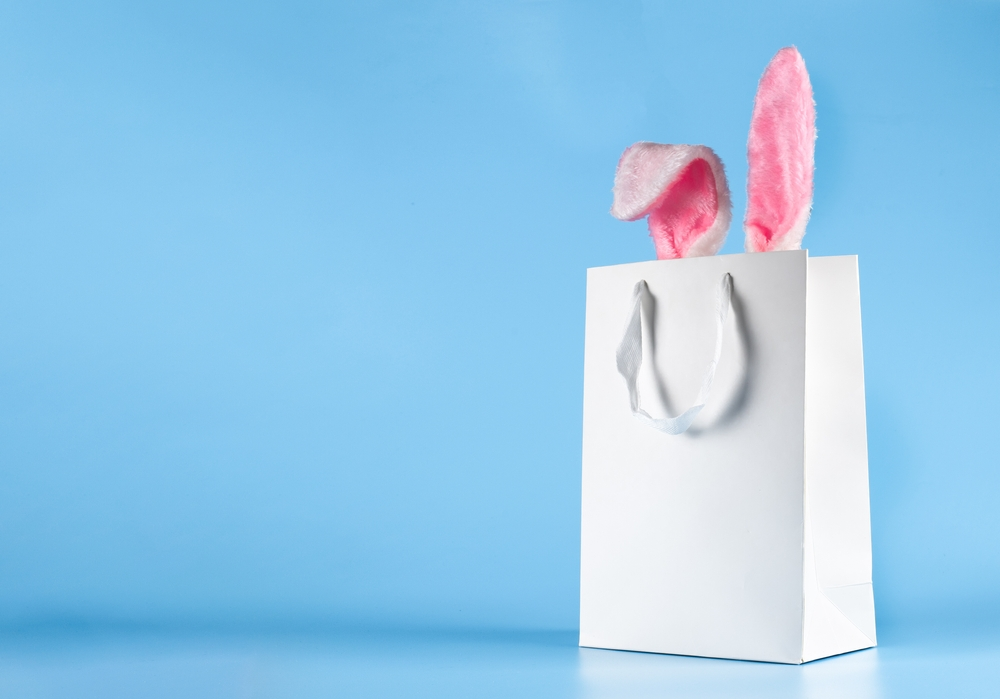Marketing competitions are an ideal tool for achieving a range of marketing objectives, from raising brand awareness to building customer loyalty.) In this article, we share with you 10 imarketing competitions ideas used by brands to raise their profile, generate leads and boost their conversion rate.
Create your own gamification marketing campaigns, adapting these examples to your brand universe, the expectations of your audience and your objectives.
SUMMARY
- 1. Boost brand awareness with attractive gameplay
- 2. Marketing competitions ideas to generate leads
- 3. Qualifying leads and converting through games
- 4. Promote your offer and identify potential customers
- 5. Promoting your products
- 6. Attract in-store leads with a Drive to store game
- 7. Engaging your audience during a special event
- 8. Educating customers and memorising a message
- 9. Continue to engage your audience in off-peak periods
- 10. Refine customer knowledge by collecting preferences
1. Boost brand awareness with attractive gameplay
Competition ideas enable companies to increase their visibility and brand awareness. The Qui Veut du Fromage brand relied on this format for one of its commercial highlights: Easter. Its campaign featured a puzzle game accessible after registration via JWT, enabling the brand to recruit new subscribers to its site.
What we’ve learned: to increase your visibility, you need to focus on the appeal of instant wins. Participants are inclined to take part because they know immediately if they have won. As a result of the campaign, over 2K clicks were directed to strategic pages on the site.
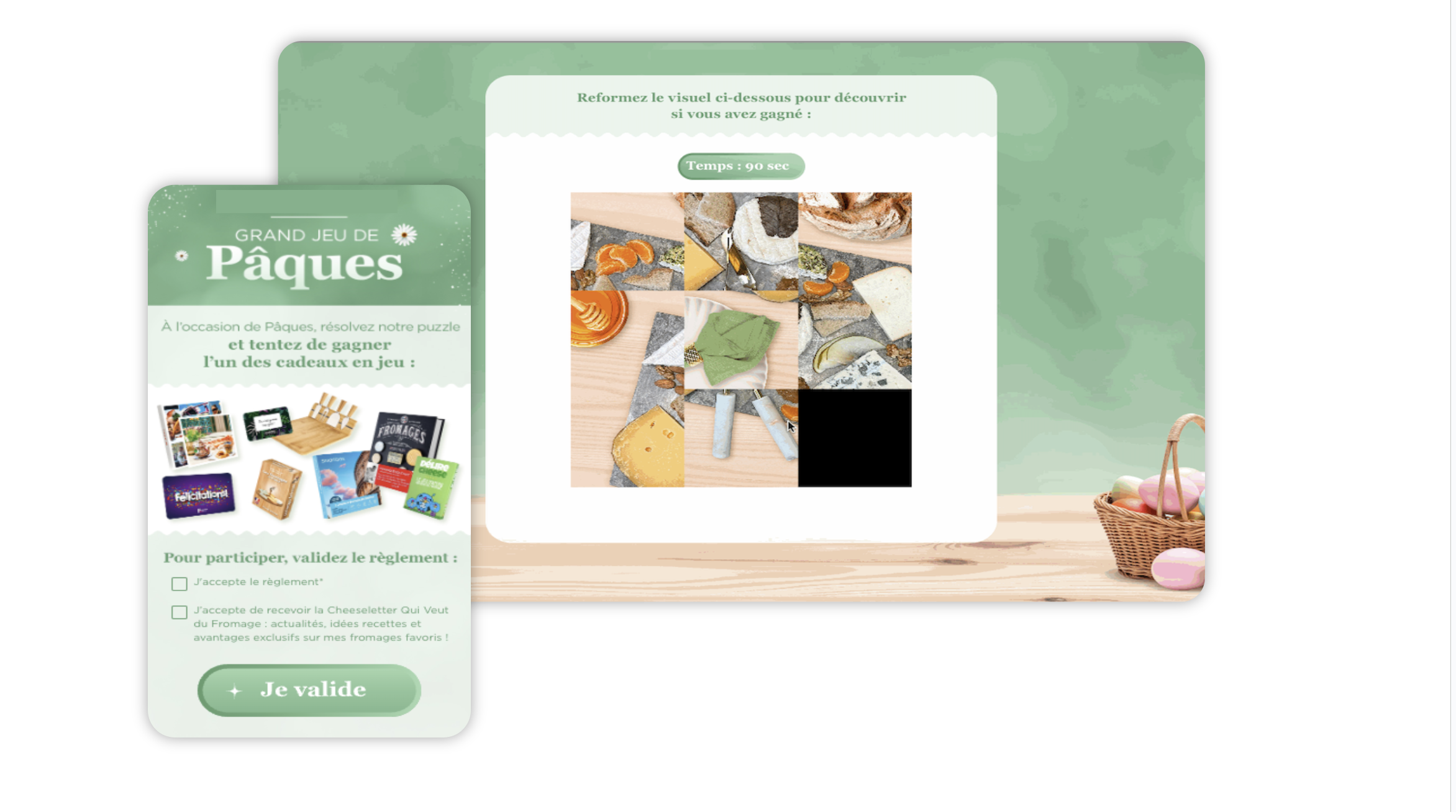
2. Marketing competitions ideas to generate leads
Gamified marketing campaigns can be used to expand your audience and generate leads. This format captures the attention of visitors, and can be used to promote a range of products, for example.
Electrolux launched a Slicer to highlight its eco-responsible products and the launch of its website. Users could win vouchers. This enabled the brand to collect leads and product preferences while boosting its conversion rate. The campaign generated 23K registrations with an opt-in rate of 51%.
Remember: the key is to offer attractive prizes (promotional codes and products) to attract the interest of qualified prospects.
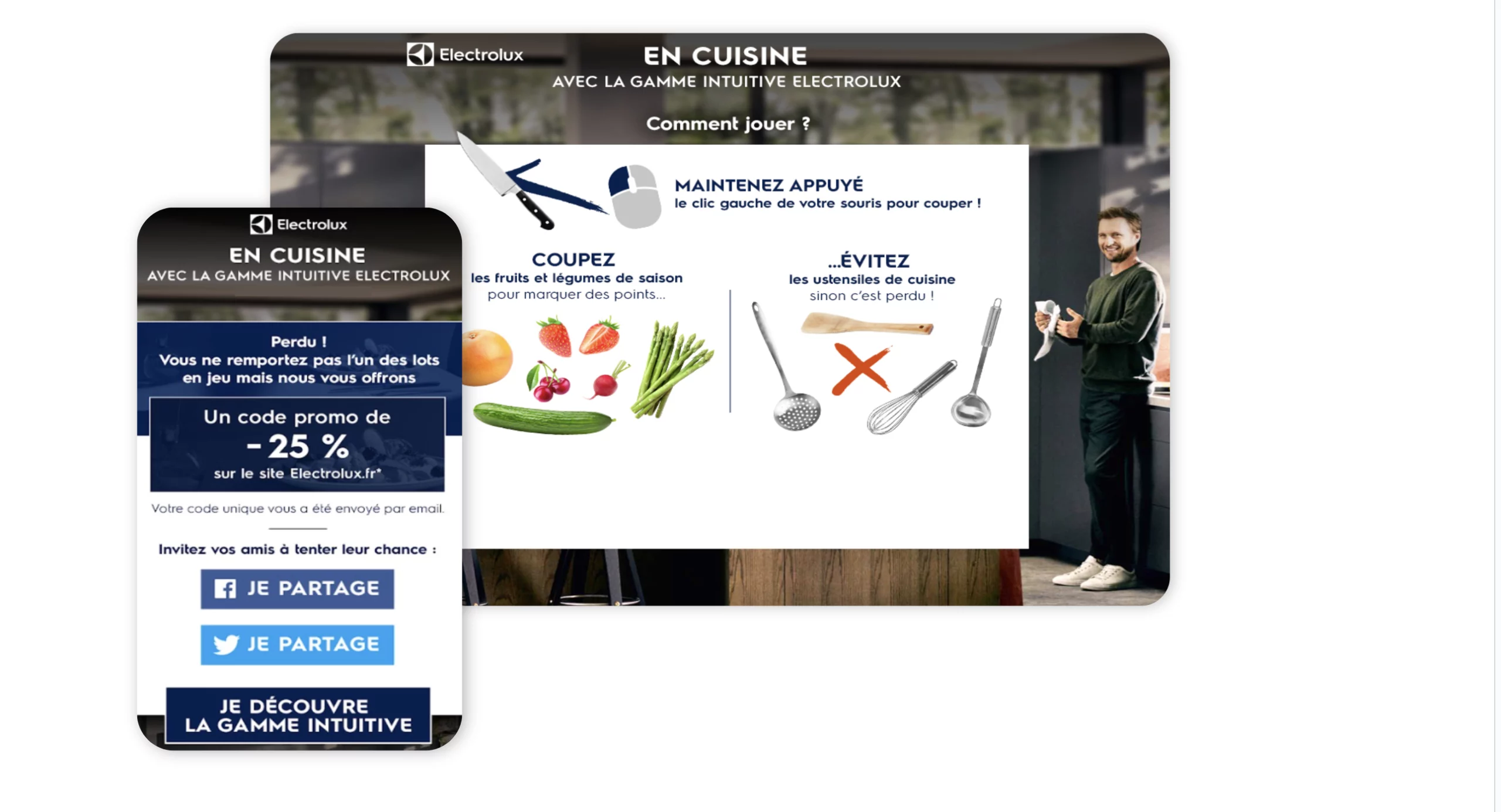
3. Qualifying leads and converting through games
As well as facilitating the collection of leads, the competition also helps to qualify them and therefore boost the conversion rate. Leroy Merlin’s ‘Renovation’ campaign collected leads (creation of customer accounts) while qualifying them using the Swiper mechanism. This competition enabled the company to collect customer preferences based on their renovation projects.
Remember: to qualify leads, we rely on mechanics that allow us to collect customer preferences, such as Swiper, Battle, etc. The game enables users to be segmented according to their purchasing intentions and offers to be sent out that are tailored to the needs of each participant.
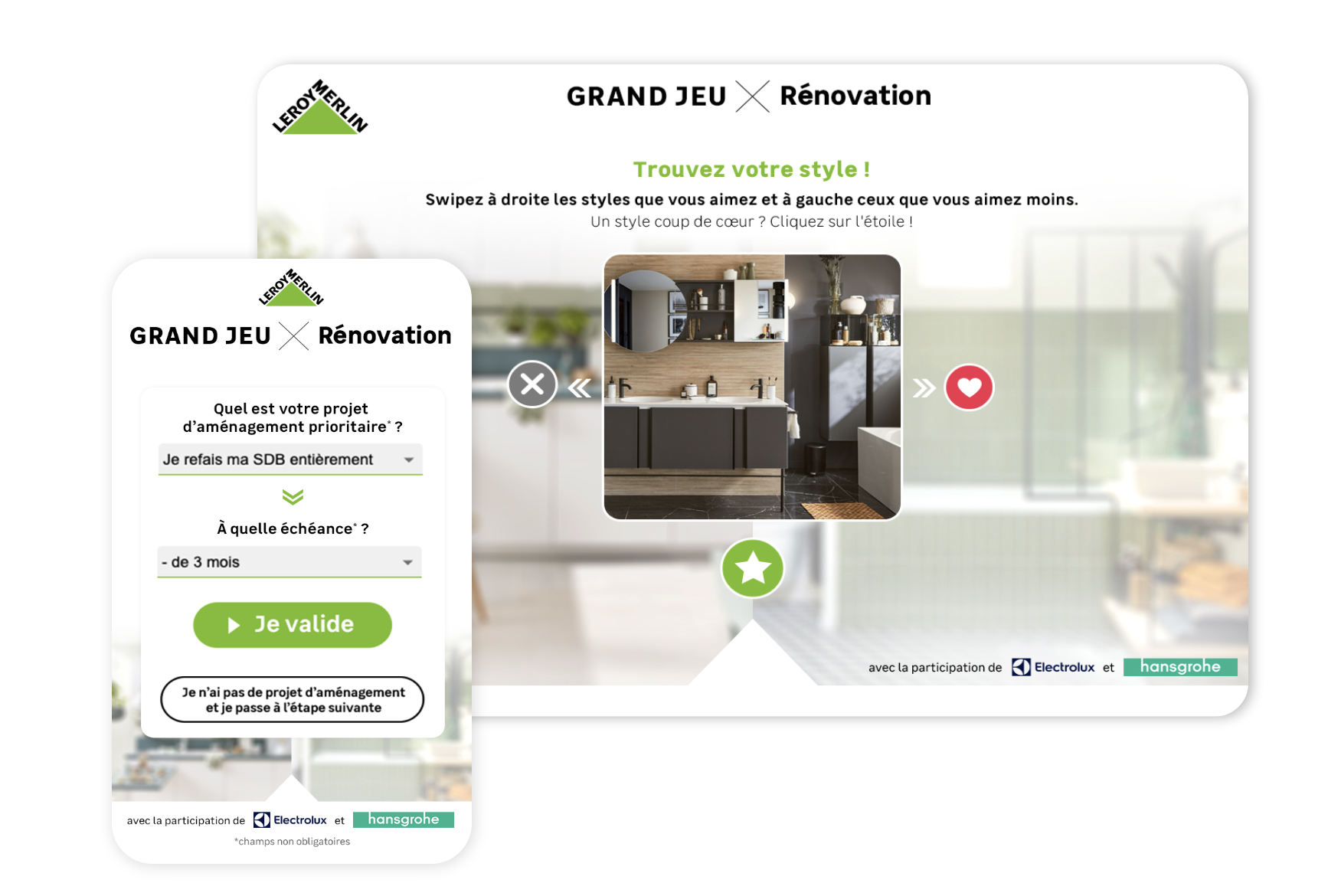
4. Promote your offer and identify potential customers
The competition also makes it possible to identify which of the leads collected are intentional (i.e. the most likely to convert), while at the same time highlighting an offer or commitment made by the company. Total has used the game as a lever to find out which of its customers and prospects are responsive to a specific offer. Sent to part of its CRM database, the Quiz was used to promote the offer in an educational way and to identify potential customers.
Remember: mechanisms such as Quizzes and Surveys are relevant to this objective. By asking questions about their intentions, companies can recruit leads to retarget, thereby maximising the conversion of their campaign.
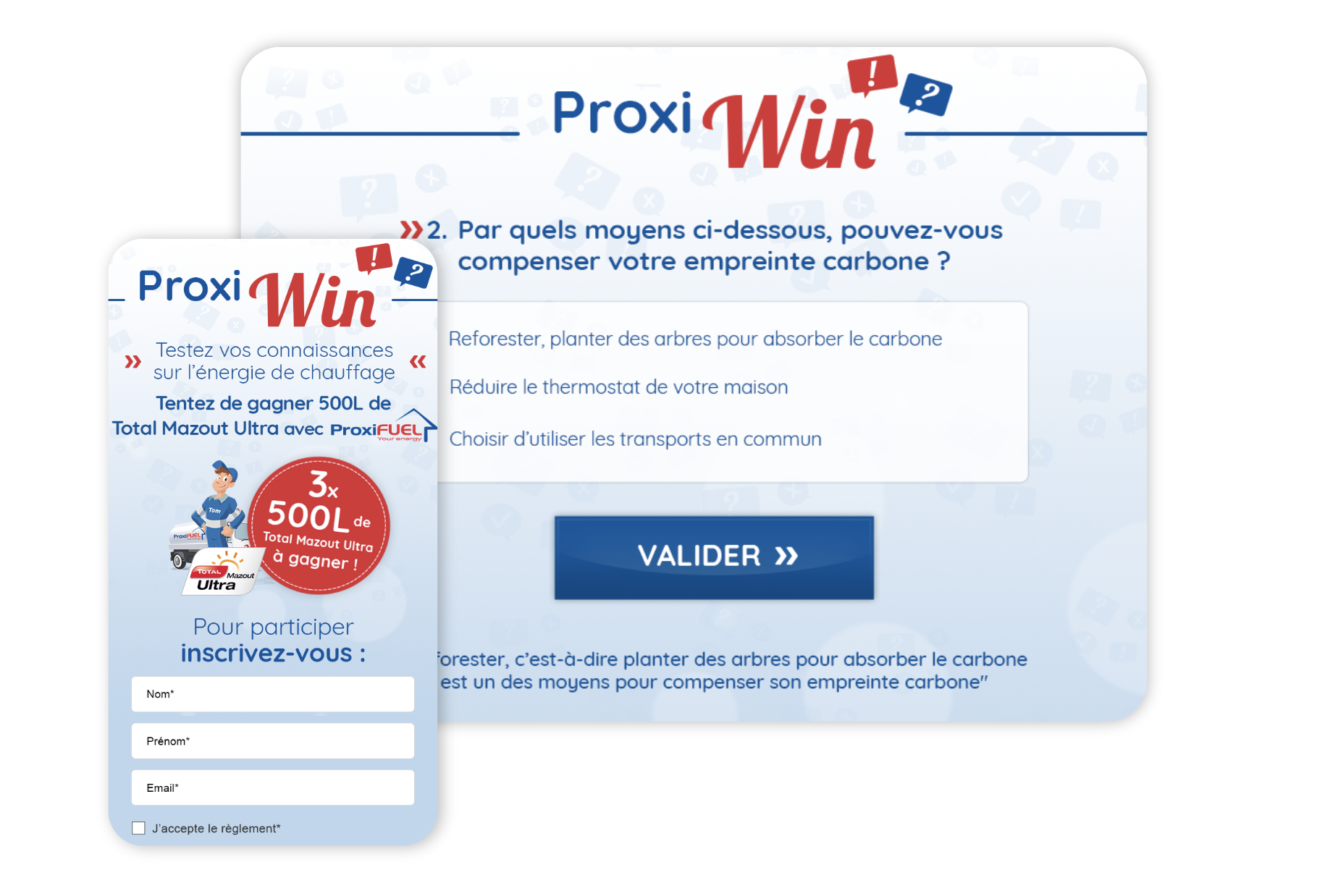
5. Promoting your products
Competitions can be used as a marketing tool to promote products in an original way. The Electrolux campaign generated a high rate of engagement (2.5 games per player on average), giving the brand’s products visibility. This represents more than 2 minutes of interaction with its target audience, a record amount of attention time that the brand was able to take advantage of to reinforce the memorability of its products.
Remember: to capture attention and encourage message retention, rely on captivating mechanics that encourage users to try again and maximise the interaction time between the brand and its customers.
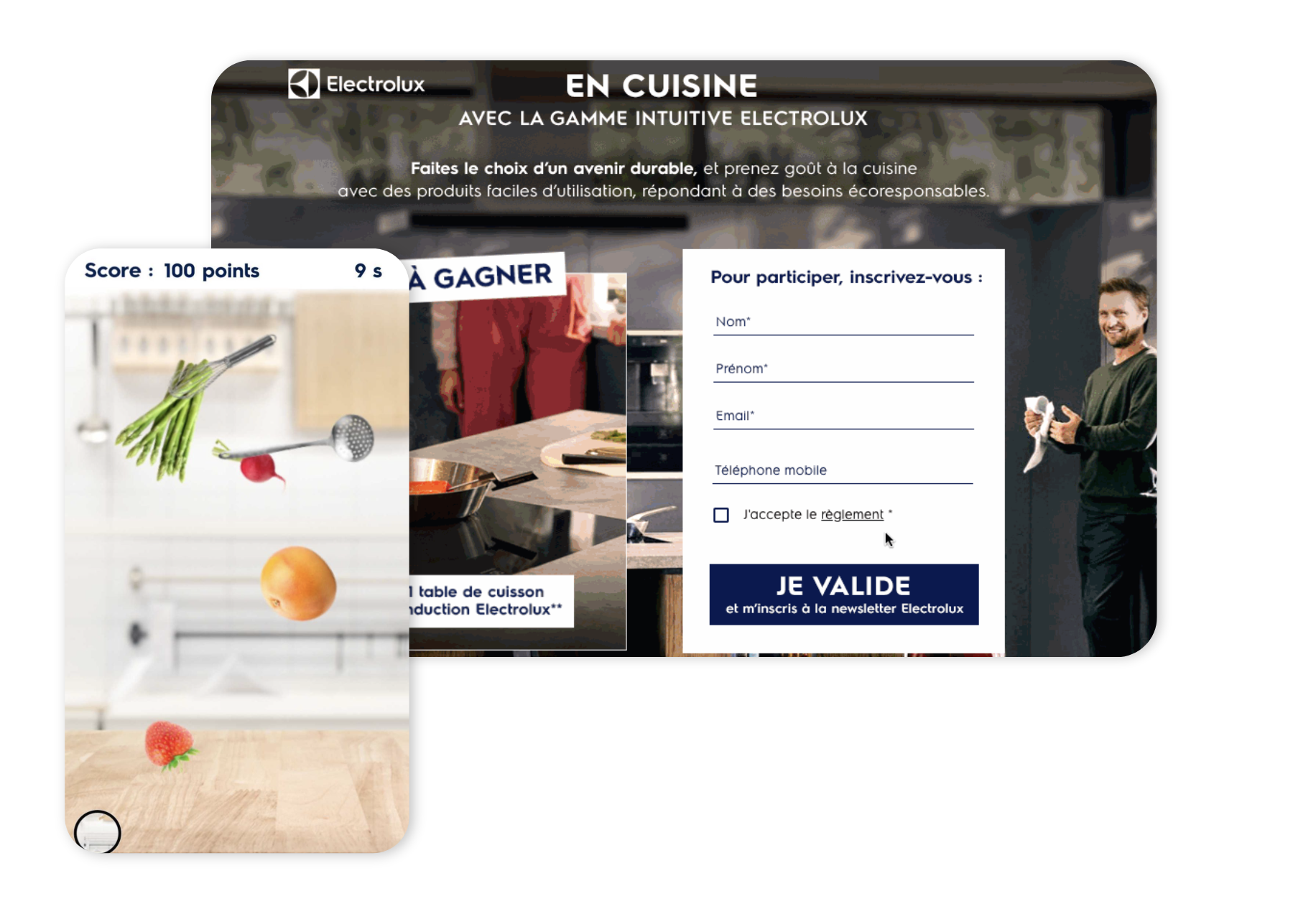
6. Attract in-store leads with a Drive to store game
A competition is a tool for capturing the attention of your audience with the aim of redirecting this traffic to your physical points of sale. This is the drive-to-store strategy employed by Aushopping. The company has chosen the Outrun, an immersive experience, to raise the profile of its shopping centres. The game, which focuses on engagement and lead generation, encourages web-to-store traffic. It achieved an excellent conversion rate: almost all of the 39,000 visitors to the game filled in the form and played, underlining the appeal of the operation.
Remember: the choice of an immersive mechanism is relevant because it is in line with the brand’s objective (drive-to-store).
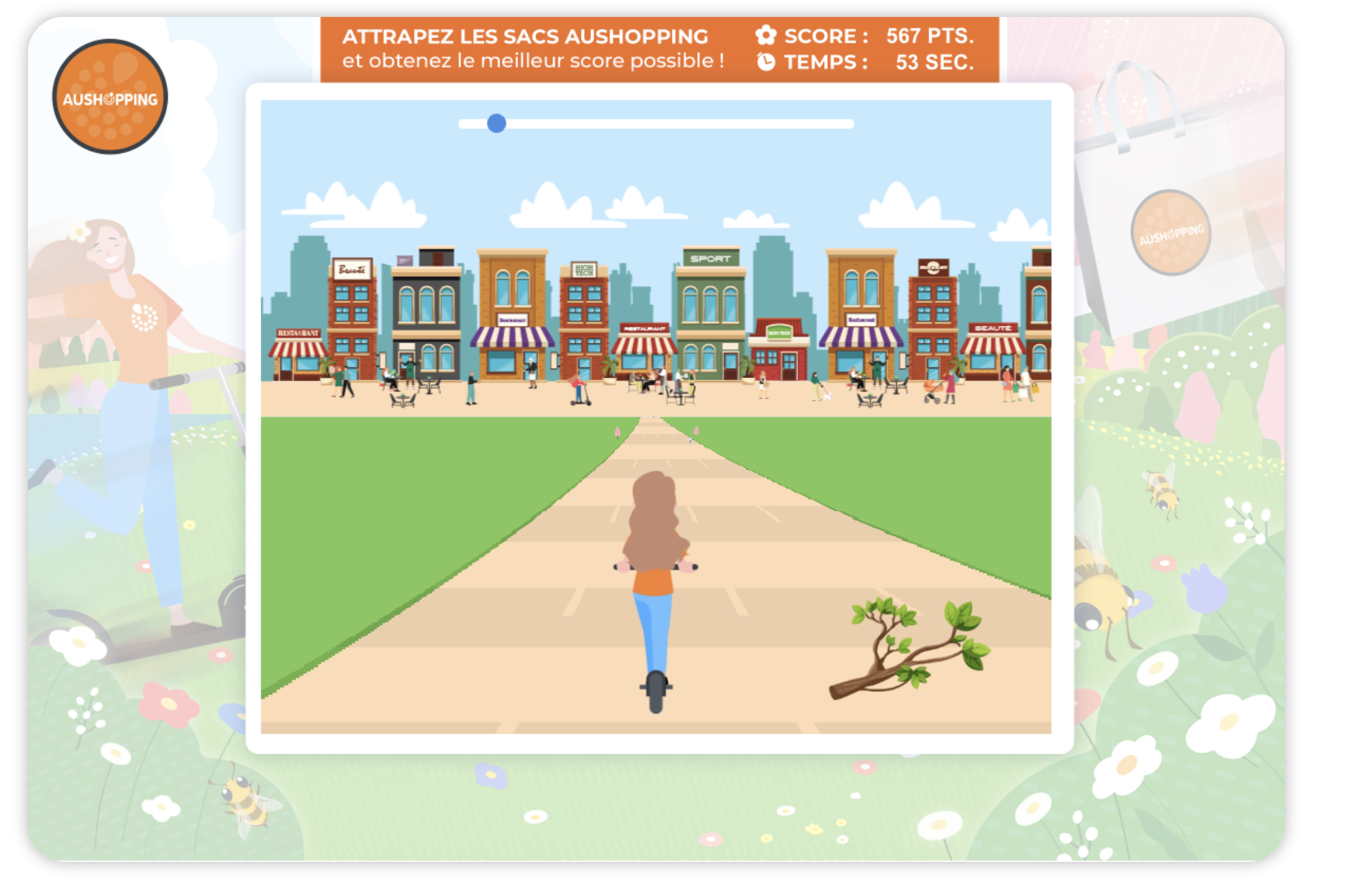
7. Engaging your audience during a special event
By offering brands the opportunity to challenge their community, the competition becomes a lever for engagement. Boulanger has chosen the Social gauge to recruit as many optins as possible during product live events. But also to engage its community on social networks. Each subscriber could try their luck in the prize draw to win products from the Live event. But users were encouraged to share the competition with their friends and family, as the more people who took part, the greater the value of the products up for grabs!
Remember: offering your community the chance to take part in a collective challenge, with increasingly attractive prizes up for grabs, is an excellent way of boosting engagement and virality.
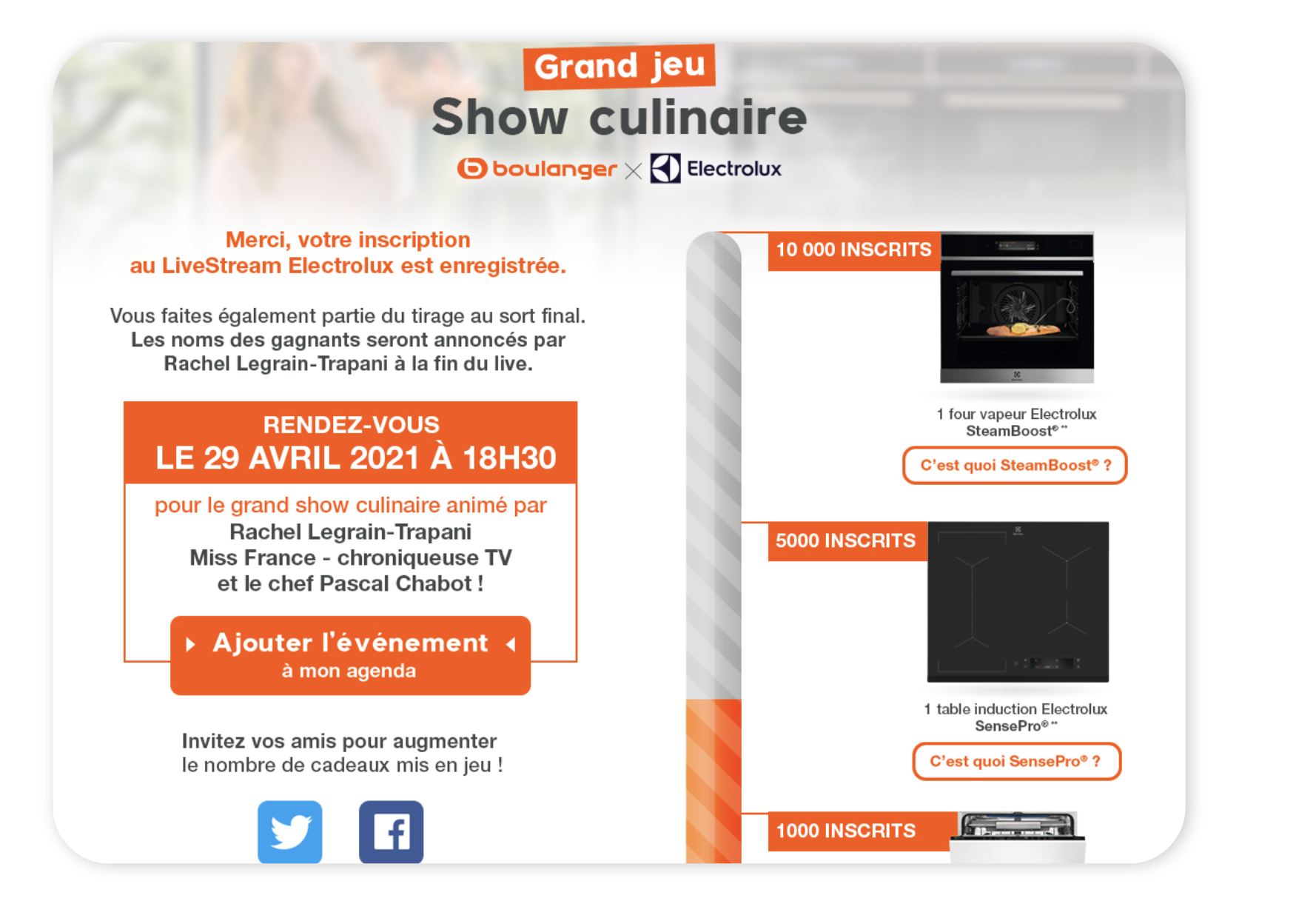
8. Educating customers and memorising a message
The challenge of educating the market is a strategic one for many business sectors, such as the energy sector. GRDF has opted for an edutainment approach, scripting the mechanics of the system to make it easy to understand. Tiny Wings around the production of Green Gas. This format enabled the brand to promote its eco-friendly offer in an offbeat and memorable way. The score-based game engaged users, encouraging them to spend time with the brand and to remember it.
Remember: gamification is a way of raising audience awareness of your values or highlighting your commitments. The key here is to use an engaging mechanism to get your message across.
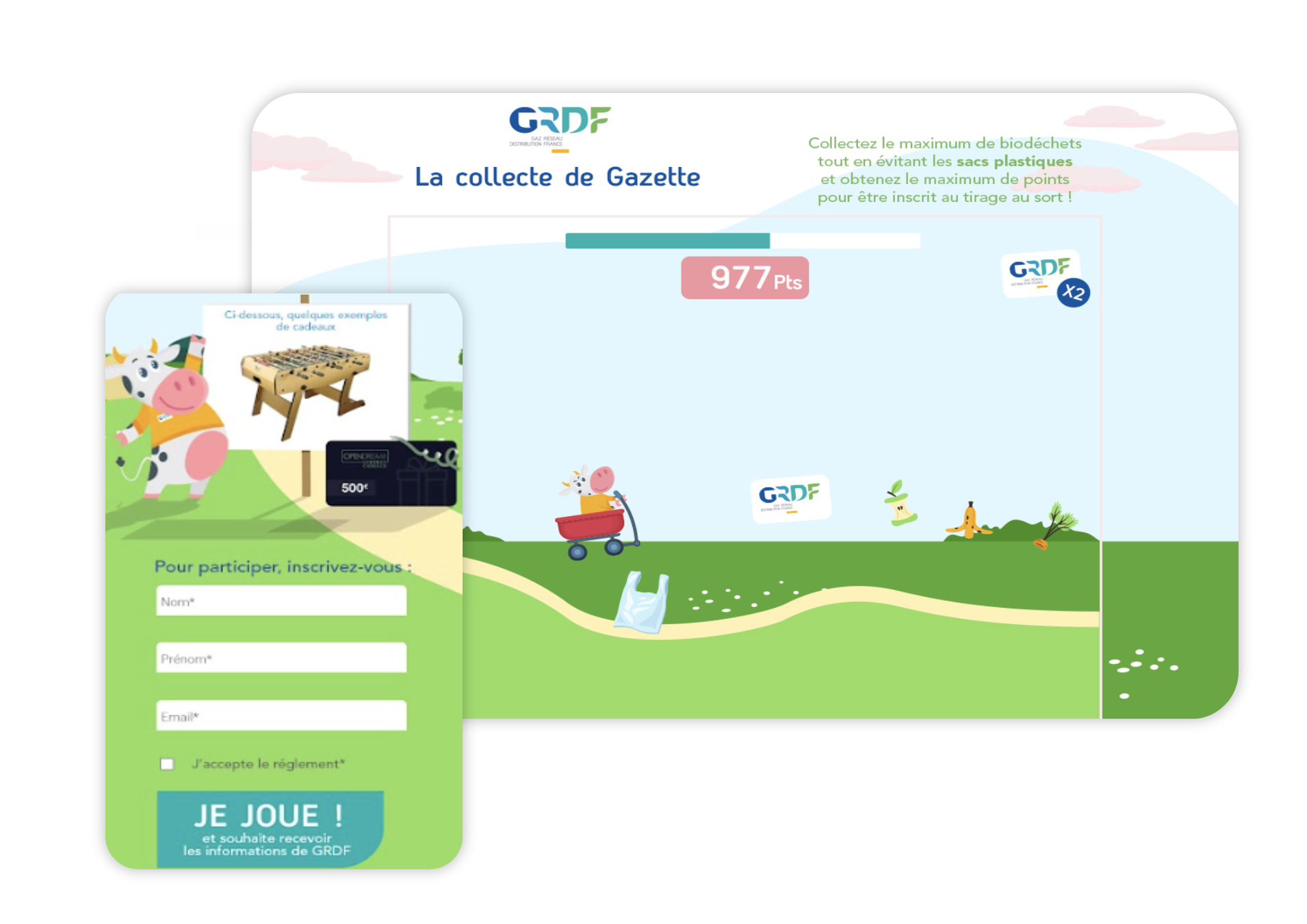
9. Continue to engage your audience in off-peak periods
Certain periods of the year are complex in terms of communication. During the summer holidays, for example, consumers are less attentive to the messages being shared. To maintain the link during these two months, Showroomprivé launched its Summer trips campaign. By featuring Parc Astérix as a partner, the brand was able to generate leads that responded to the game. The results were impressive, both in terms of participation (177K users) and engagement (with a rate of 90%).
Remember: the strength of this campaign was that it was able to adapt its creative universe to the busy commercial period. Users were all the more receptive to these competition ideas as they could win a free trip to Parc Astérix.
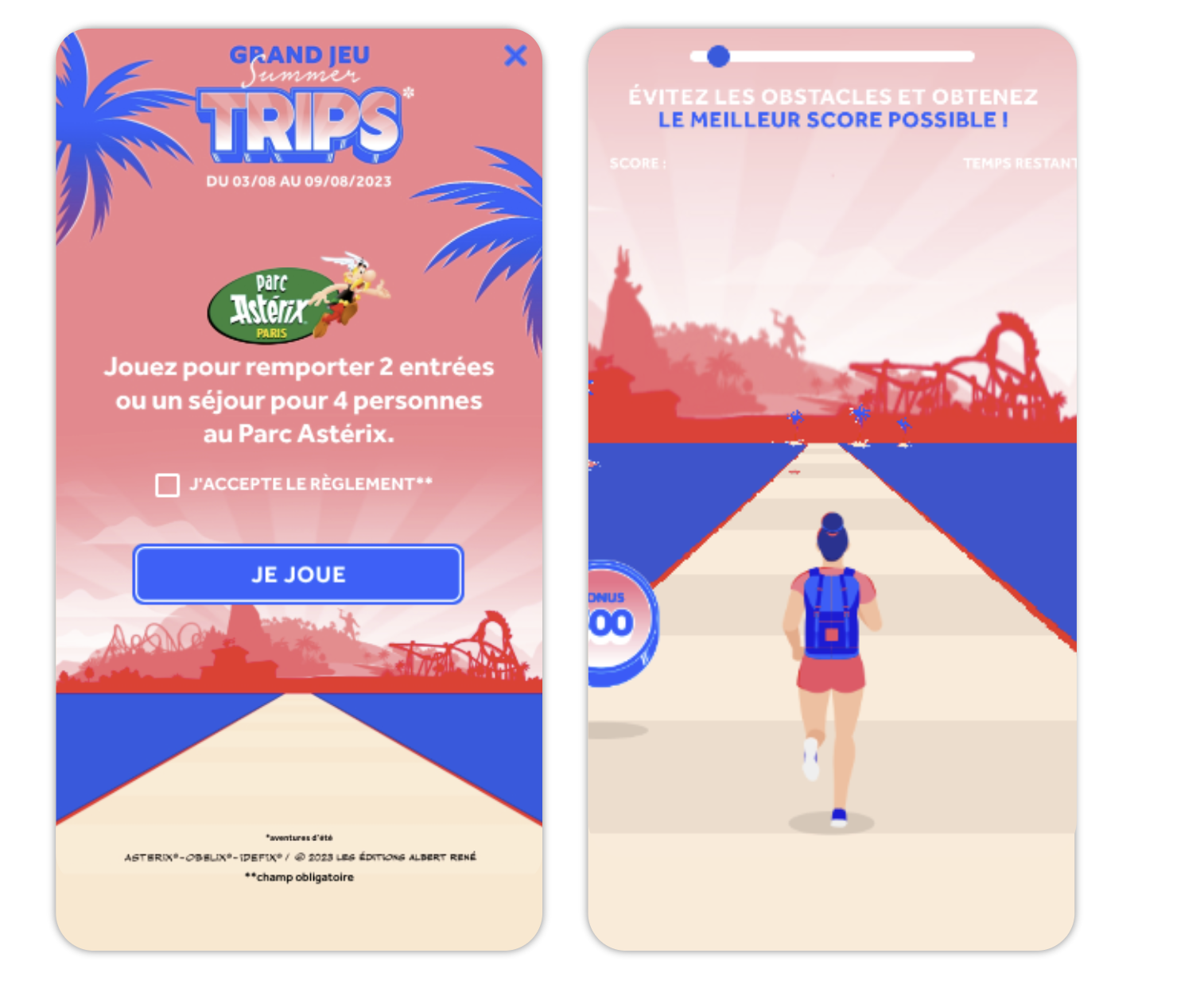
10. Refine customer knowledge by collecting preferences
Remember: The competition enables us to collect data on the preferences of our audience. The challenge will be to use this information to segment new leads in order to create retargeting campaigns.
